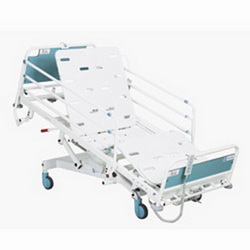You might think that a bed is a bed, but that is very different from the truth. There is a lot of medical beds guidance to help hospitals, medical institutions and individuals to choose the right kind of bed that will suit a number of requirements. In fact, medical facilities have very strict guidelines that they must follow. It is surprising the number of accidents that can occur that are bed-related. People fall from beds and can catch one of their limbs in the metal structure. Sound and safe structures are especially important for the elderly as many are confused or disorientated and in their vulnerable state try to escape from their hospital beds without thinking.

Possible problems with side rails
Avoiding entrapment is a very important consideration and medical beds guidance takes this into account when replacing beds in hospitals. Any space between the mattress and the side rail of the bed can be a real source of pain and can even cause patients to become trapped. The side rails are designed to help a patient remain in the bed when there is a risk of falling from the bed. However, with more elderly and confused patients, this can become a health risk if precautions are not taken. The confusion is enough to make a patient bolt from the bed believing he is trapped in a cage. No sense of self is involved in this decision, which can put his health in danger. Medical beds guidance suggests that there has been a good many deaths reported that have been directly caused by patients becoming stuck or trapped by the side rails.
Avoiding entrapment
The assessment of medical beds has helped designers address the many issues that can be caused by side rails. As bed rails can come in a variety of shapes and sizes, particular importance must be placed on the shape and size that is immediately close to vulnerable areas of the body, such as the chest and neck areas. Whether the bed rails are made from plastic or metal does not play a part in their culpability to accidental death. The bedrails that are half the size is preferable to the full sized ones, as some patients have tried to escape by climbing over these, which has led to them falling from a greater height and caused more injuries and even death.
Safety first
Clearly, a patient's safety is paramount, but it is incredibly difficult to plan for all eventualities, which is what is expected of the designers. Medical beds guidance can help in some way, but at the end of the day by paying attention to practicality and coupling this with as many safety measures as possible, the amount of deaths and serious injuries can be minimized, but can never be completely eradicated. The only way death caused by bed rails can be completely eradicated is to have 24-hour watch on a patient, and even then a struggle may still result in an accidental death. Medical beds guidance suggests that discretion should be used as to whether a patient needs the bed rails raised or not, and this is a whole new area of discussion.
